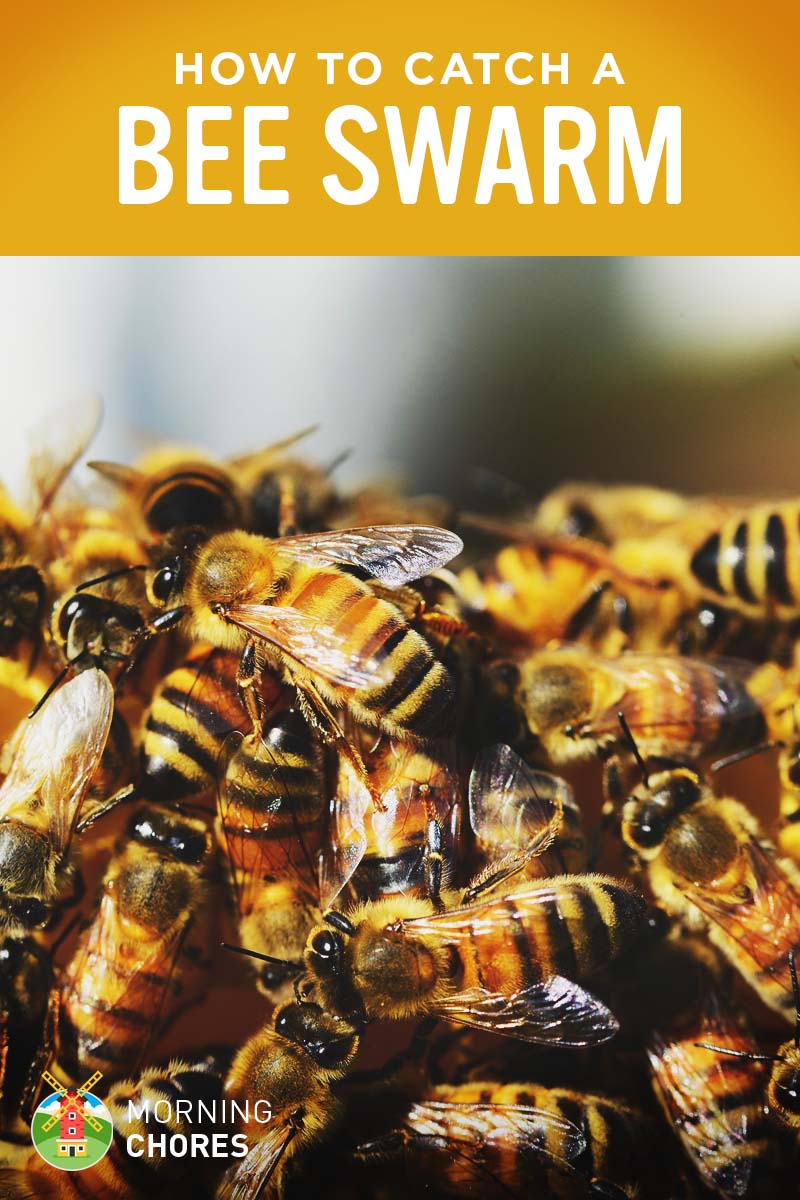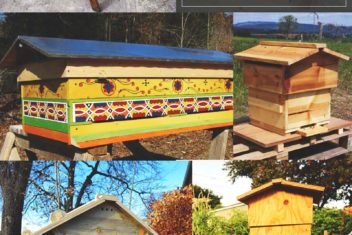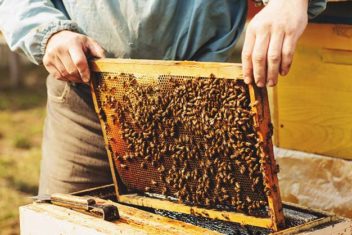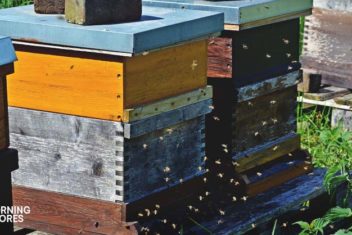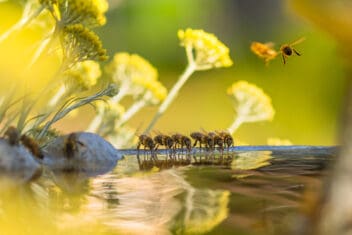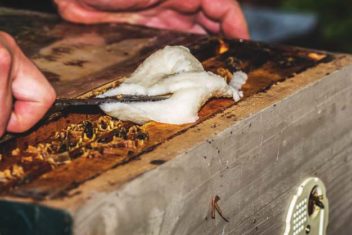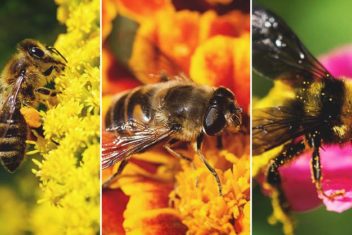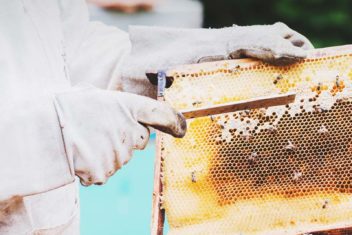Did you know that honeybees pollinate around 80% of all fruits, vegetables, and other seed crops in the US? Or that they are the only insect that makes food for human consumption?
Amazing, isn’t it? Such small creatures can do so much for us. This is why raising bees is not only beneficial for you but also for people around you.
However, bees can be a nuisance if they swarm in unwanted places. If you are raising honeybees, they are always working and breeding inside their hives, meaning they are getting closer and closer to swarming.
If you don’t want that to happen, there is one way to “prevent” it: By splitting your beehives.
Here’s all you need to know:
How to Identify When Swarming is About to Happen
Swarming is a natural part of a bee’s life.
Basically, swarming happens when the hive is getting too full and the bees will come together to raise a new queen. However, instead of killing her off (like they do any other queen that might intrude their hive), they accept her, and half of the hive population takes off with the old queen.
The remaining bees and the new queen keep their hive. Now they have the extra space they were desperately needing.
You will know swarming is beginning to take place when you go through your hive and start spotting queen cells. Bees don’t create queen cells unless something is happening.
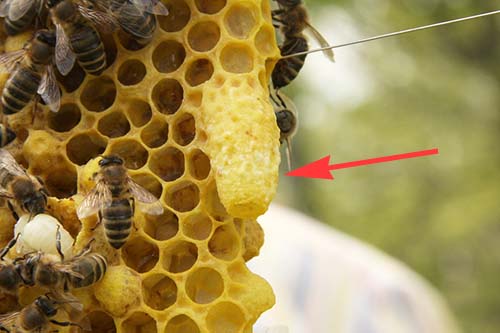
However, it’s important to know that even if there are queen cells, it doesn’t always mean your bees are swarming.
There are three types of queen cells:
- Swarm cells: vertical-shaped, long, and usually hanging on the edge.
- Supersedure cells: vertical-shaped, long, located in the face of the comb. If you find supersedure cells, it means your current queen is getting old or is unable to do her job.
- Emergency cells: curved downwards, smaller than swarm and supersedure cells. This happens when there is a sudden loss of the queen.
Once you’ve confirmed that it’s a swarm cell, you should also look at how much laying space the current queen has. If her frames are full of brood then you definitely know that she is about to kick a few bees out to make room for the ones she has laid.
So if you find yourself staring at a hive that is rather agitated, raising new queen cells, and has no more laying room, be prepared for a swarm that is coming.
Can Swarming be Prevented?
Well, in a short answer, nope. When bees have made up their mind to swarm they are probably going to do just that. It’s for the better too because you don’t want your hives getting too crowded.
However, what you can do is perform a beehive split so they think that they have swarmed.
How To Split a Beehive
It is a rather simple task, actually.
First, you will need a nuc box. Place some honey frames and frames with pollen inside the nuc to make sure they have ample to eat.
Second, you will go back to the original hive and carefully remove frames that have queen cells on them. The more queen cells you add to the nuc the better off you are because it gives the starter hive a great chance at survival. Don’t worry if multiple queens hatch.
The bees will decide which queen they accept and take care of the other queens that have hatched.
Third, add a few frames for the bees to build out. And when the queen hatches, the split should begin to thrive. The bees will then ride along on the frames moved over.
So all you need to do a beehive split is a nuc.
Now, nucs can be a little weak in the beginning. That is okay. With a little patience, your queen will begin to lay and the hive will build. And before you know it, you will have a second hive at no cost.
If you prefer a visual explanation, here’s a nice video about splitting bees:
What To Do If Your (Or Someone Else’s) Bees Have Swarmed
In the spring, it is very common to come across random swarms of bees. The bees come out of the hive and start thriving after a long winter.
So when they get their numbers back up, they overcrowd and begin to swarm. If you happen to be one of the lucky ones to have a swarm land on your property, don’t panic.
Embrace the gift, you just got a lot of free bees!
However, what if you are a beekeeper and your own bees have swarmed and they took over the front of your car, a lawn chair, or even landed in one of your trees? It’s still a gift too because they didn’t leave your property.
Swarms are very docile and pretty easy to catch.
How to Catch a Swarm
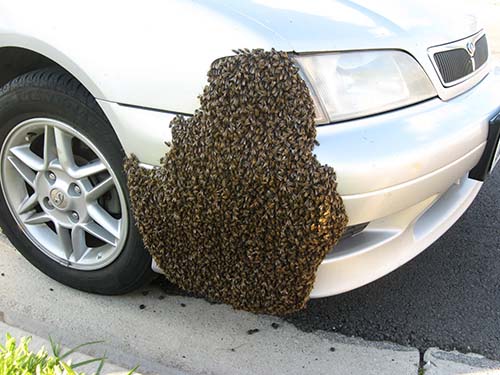
First, you’ll need to get the bees to a place where you can handle them. If they are already at ground level such as on a chair or on the front of your car then you can skip this step. However, if they are in a tree, you’ll need to cut the limb that they’ve gathered on down if it is at all possible.
Second, you’ll need to spray the bees with sugar water. This keeps them calm because they are so busy licking themselves that they don’t pay attention to anything else.
Third, you’ll brush them gently into a nuc box with frames ready for them to start their new hive. However, be sure that you place a queen excluder on the front of the hive so the queen cannot fly away. If she does, you’ll lose your swarm.
And be sure to leave it on for around two weeks just to be on the safe side. This article explains in detail how to catch a swarm:
What If You Don’t Wish To Split a Beehive?
If you are someone that doesn’t care about multiplying their bees or honey production, then you might not want to go through the process of splitting a beehive.
In this case, just let your bees be.
They will swarm on their own and create more space within their hive without you doing a thing, and you will be giving a free gift to people around you if they find your swarm.
If you are someone that raises bees for profit, pollination, or for the honey then you will probably want to familiarize yourself with performing a swarm split. It’s an easy process.
Great Reasons to Perform a Beehive Split
Learning how to perform a beehive split will be beneficial to you. There are more reasons to this beyond protecting your hives from swarming:
1. Multiplying Hives
You can perform splits if you want to multiply your hives.
If you have a desire to get more bees for less money, then you would perform a split to do this. As I mentioned previously, when you perform a split then you can literally build an unlimited amount of hives with only the purchase of your original hive.
That is a lot of savings!
2. Increase Honey Production
You can perform splits to increase your honey production. Well, obviously, because when you perform a split you get more bees. When you have more bees this means you also have more bees to collect pollen to make honey. Even if you don’t need more honey, you can sell it for profits.
3. Pollination
You would also perform splits to have more bees for pollination. As mentioned at the beginning of this article, bees pollinate around 80% of crops in the US.
So if you are someone who homesteads, farms, or even gardens then your bees could be great friends as they will certainly boost your crop production. You could also go into business for yourself as a pollinator.
People actually pay to lease your bees to their property for pollination purposes.
4. Raise Nucs
You can perform splits if you want to raise nucs. This is a very viable business. You create your own hives or nucs from splits and then turn around and sell the hives and nucs off. In our area, nuc and hive prices are a bit high on the price scale.
So you could add this to the list of ways to make money from your homestead.
5. Plan On Raising Your Own Queens
Finally, you need to know how to perform a beehive split if you ever plan on raising your own queens. My husband and I have recently gone into business with some friends of ours. We are basically offering a full bee service; selling nucs, hives, honey, and queens.
We are basically the one-stop shop for bees.
It is thanks to my husband who has spent over a year working on flawlessly performing splits and trying different queen raising techniques for us to be able to launch this company.
However, knowing how to raise your own queens is invaluable as a beekeeper because any time your hive starts running down you’ll be able to raise a new queen and get it up and going again.
As you can tell, knowing how to perform splits is a great bit of knowledge to have under your belt as a beekeeper.

